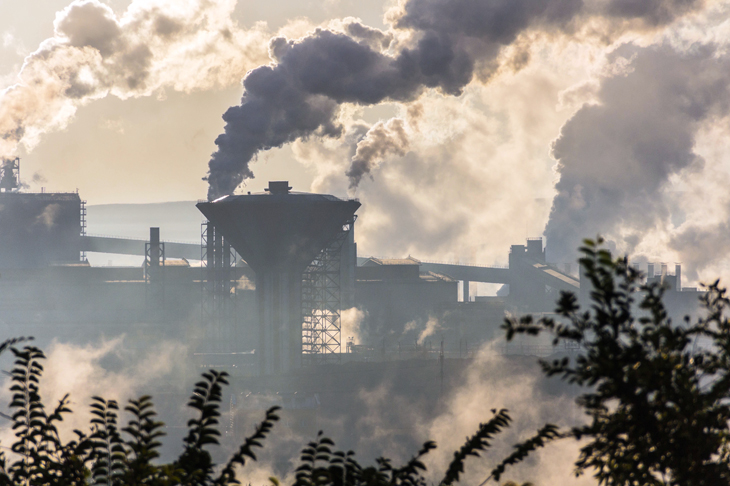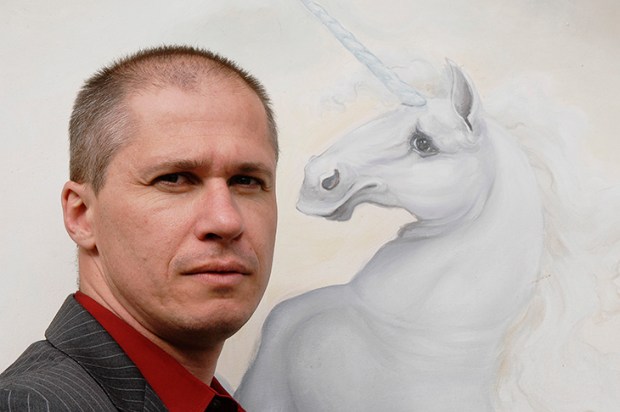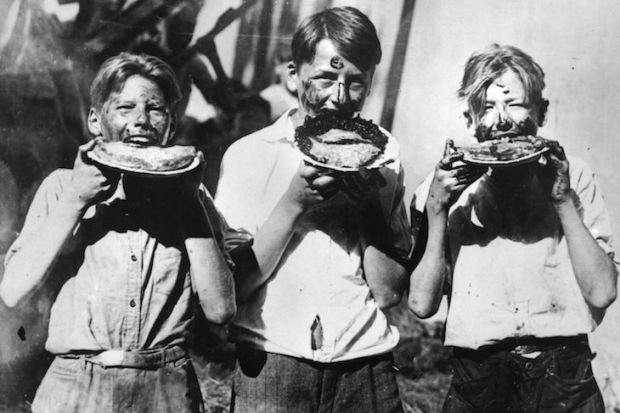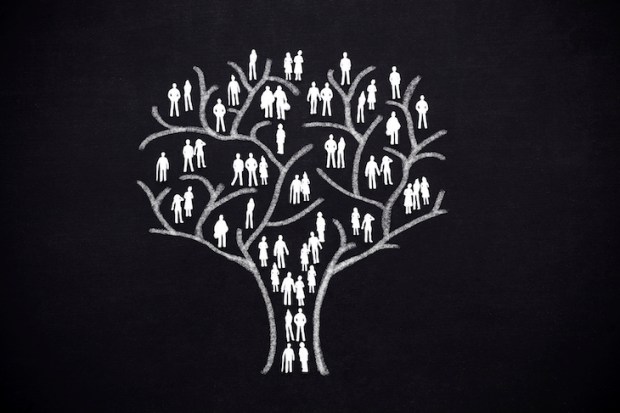Industrial factories huddle at the very edge of our world view. Most of us have never visited one, but we know what to expect. The ugly buildings. The dull work of the shop floor. The worker reduced to a mere fleshy extension of a machine, his existence condensed into a series of jerks, twists and spasms. A life at best eroded by monotony — an eternal inhabitant of Dickens’s Coketown, ‘to whom every day was the same as yesterday and tomorrow, and every year the counterpart to the last and the next’ — or at worst snatched up and tossed onto the sacrificial flames of Fritz Lang’s modern ‘Moloch’ of the 1927 epic, Metropolis. They are places either too boring or too bleak to be of interest. But try to think of five things you use daily that weren’t made in one.
For most of their history, factories were at the centre of an important debate: what the future would look like. They were photographed, painted and written about. The world had dreams and nightmares over them. Theirs was the power to forge different classes, advance a nation and allow exclusive luxuries to be made widely available. Joshua B. Freeman argues that this debate over the future came to a head in a series of Behemoths — giant factories which captivated and shaped the world, employing the most, building the biggest, aiming the highest.
The numbers quoted by Freeman are off the scale. They make the reader, and everything he knows, feel uncomfortably small. The Chinese manufacturer Foxconn employed around 400,000 workers at its peak at the beginning of this century — almost the entire population of Edinburgh. Even back in 1906, the US steel mill in Gary, Indiana spanned 14 times the area of the City of London. Henry Ford’s Press Shop was just one building at his River Rouge complex in Michigan, but was big enough to fit four Palaces of Westminster inside. Behemoths indeed.
When factories first sprang up in the form of 19th-century cotton mills, the Victorians struggled to compare them to anything they had ever seen before, resulting in tenuous analogies to convents or palaces. But traditional they were not. Carlyle called them ‘progress’; Blake called them satanic. The unprecedented multitudes crammed into factory towns led to the formation of a new class, the proletariat of Marx and Engels. Thus were born the group identities and conflicts that would dominate politics.
Freeman believes that the potential for class division was seen most clearly in giant factories. Alexis de Tocqueville feared the mills being built in Lowell, Massachusetts would overturn the abolition of ancien régime hierarchies in America, with mill owners using their extreme wealth to form a new aristocracy. The vast power accumulated by the later magnates of American industry, Andrew Carnegie and Henry Ford, was perhaps a prophecy fulfilled. They were able to dictate workers’ behaviour both inside the factory and out. Both men were so far separated from their employees that Carnegie admitted ‘rigid castes’ had been formed.
It therefore seems strange that the USSR became such a proponent of giant factories, with Stalin even hiring Ford to build them in 1929. But whereas capitalists had used factories to enrich themselves through maximised production, communists would present them as a way of enriching the state and society. Workers would leave their ‘backward’ peasant villages for such giant plants as the Magnitogorsk steel mills. They would advance the nation through production during the day; and at night better themselves by attending philosophy and engineering classes. Any leisure time (organised by the friskily named Everyday Life Administration) would be spent in the purpose-built town surrounding the complex. In this way, the society of the future was to be orientated around the worker and industrial production.
These colossi no longer bestride the West. Their greatest strength was also their greatest weakness. Abundant labour inevitably leads to a disregard for individual suffering, with bosses pursuing the larger goals of productivity and profit. The giant factory repeatedly slides into exploitation, harsh conditions and long hours for low wages. Vast numbers of discontented workers assembled under one roof gradually organise and bring the Behemoth down through strikes. American producers have consequently either downsized to regain control over their workers, or have outsourced to shady plants in China, so that exploitation can continue out of sight.
And exploitation it is. Chinese factories such as Foxconn and Pegatron regularly violate national labour laws. Work shifts are 12 hours a day (including enforced, unpaid overtime), with public humiliations for minor infringements, and talking strictly forbidden. Freeman does an essential service by publicising the continuance of a system whose foundations rest on a banal evil. Giant factories depend on us not knowing about them, blinding us by the modernity of their products. In 2010, 18 workers at Foxxcon (none older than 25) attracted widespread coverage when they flung themselves to their deaths in despair. Perhaps this was the only way to gain our attention.
Industrial giants seem to invite comparisons to those biblical monsters Moloch, Beelzebub, Baal and now Behemoth. The uncaring way they smite mere mortals have their obvious parallels, while the heat and noise compare to fire and brimstone. And it is tempting to see them as false gods, worshipped by fanatics confident that if a few are sacrificed, many will benefit.
Perhaps factories are just that — mere idols. But although Freeman shows that workers can topple them, the systems they represent — mass production, consumerism, industrialisation — have never been broken. We love the Behemoths too much. Freeman ends his book optimistically, suggesting that our reliance on these vast plants can be changed by some sort of global ‘reinvention’. But Pegatron makes the iPhone. How do you convert a world of fanatics?
Got something to add? Join the discussion and comment below.
Get 10 issues for just $10
Subscribe to The Spectator Australia today for the next 10 magazine issues, plus full online access, for just $10.
You might disagree with half of it, but you’ll enjoy reading all of it. Try your first month for free, then just $2 a week for the remainder of your first year.














Comments
Don't miss out
Join the conversation with other Spectator Australia readers. Subscribe to leave a comment.
SUBSCRIBEAlready a subscriber? Log in